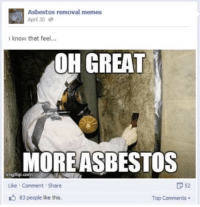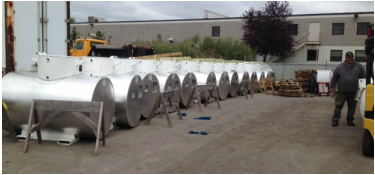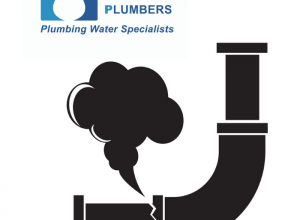

- The first and foremost thing is to determine whether asbestos is present in the structure where work is to be performed. A survey will be required to accomplish this. A Refurbishment and Demolition Survey will be required if the work to be done is intrusive and extensive. An Asbestos removal Oxford Survey, on the other hand, is solely to assist in the management of any asbestos that may be present during the normal occupation of a structure with no intention of disturbing it in any manner.
- Once asbestos has been identified, you must conduct a Risk Assessment and develop a Management Plan by the Health and Safety Executives. This will draw attention to the possibility of asbestos exposure during any work and identify who might be at risk. It will also specify the work procedures that must be used to manage the risks effectively.
- The next step is to evaluate if the work to be done is licensed or non-licensable. Most tasks involving higher-risk work and asbestos removal will necessitate the use of an HSE-licensed contractor.
- Long-term exposure to asbestos and ACMs rather than episodic exposure
- Work on asbestos coatings, including removal and any other work that may cause pipe lagging to be disturbed.
- Asbestos insulation boards are being worked on.
- Asbestos exposure is likely to exceed the Control Limit.
- Any project that involves loose-fill insulation or asbestos millboard
All licensable work must be informed to the appropriate enforcement authority, which will be either the HSE or the Environment Agency of the Local Authority at least 14 days before starting any work, depending on the nature of the premises.
- Verify that any contractor performing the work has a valid license and is equipped with the necessary training, protective gear, and breathing apparatus to complete the job safely.
- To control asbestos airborne fibres, the Licensed Contractor must seal off any places where asbestos is present and is about to be disturbed with polythene and wood to create an airtight enclosure. Controlled wetting techniques, such as spraying, needle injection, or the use of a sealant, can now be used to limit and minimize fibre release into the air. Air monitoring techniques must also be used to guarantee that control levels are not exceeded and that the area is safe to reoccupy.
- Any contaminated trash must be double bagged and sealed in asbestos waste bags, suitably identified, and safely placed at a specialist-approved waste disposal site.
- Elimination Upon completion of asbestos removal from the premises and at the end of each shift involving asbestos operations, operators must strictly adhere to decontamination procedures.
- After the contaminated waste has been removed, all surfaces in the sealed-off area must be thoroughly cleaned to remove all debris and residues. Before the site supervisor conducts a visual inspection, all visible surfaces will be vacuumed and cleaned.
- After the work is done, the contractor or client will arrange for an independent qualified laboratory to evaluate the area for Asbestos Removal. If the analyst is satisfied that the area is clean enough, conduct an Air Test within the enclosure before removing it.


